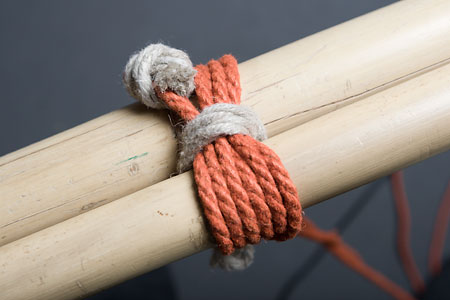The Somerville Bowline
The Somerville Bowline is not, technically, a bowline. Rather, it is actually based on ABOK 1445, sometimes later called the Myrtle Hitch. However, I call the cuff the Somerville Bowline, because its intent is to combine the speed of the Portuguese Bowline with the compactness of the French Bowline -- and it was invented in Somerville.
[Update: for videos of this tie, see here]
As a Single Column
Start as for most cuffs that use the bight as the working end, by taking a few wraps:
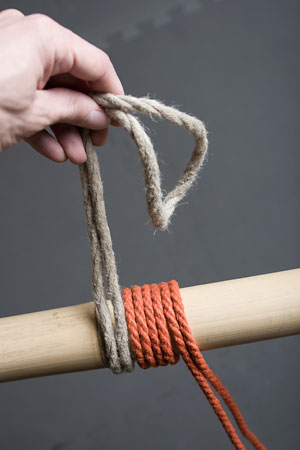
You'll notice I have a magic rope here that changes colors at the end. This is just to make it clearer what's going on -- don't freak out! You'll only be using one rope in reality.
OK, next, take the working (bight) end and wrap it 360 degrees around the standing (long) line, going in the natural/easiest direction (it has to be this particular direction! which just happens to be the most natural one, if you ask me):
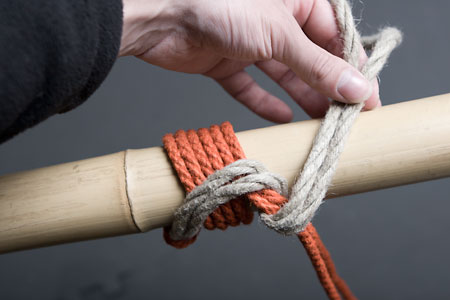
Now, pull on the working end while leaving the standing line slack, to transfer the loop from the working to the standing line:
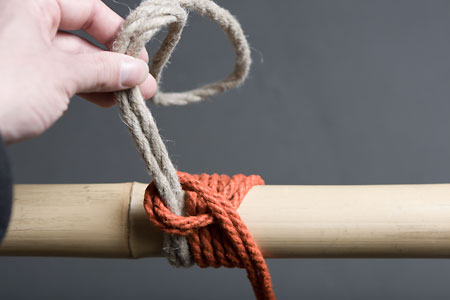
It's also possible to achieve this by just making the loop in the standing line, then pulling the working end through it -- but if you do it with the wrap-then-pull method, it's harder to wind up with the wrong sort of loop.
Next, pass the working end over the 'X' at the base of the loop:

Then back under the entire cuff to the other side:
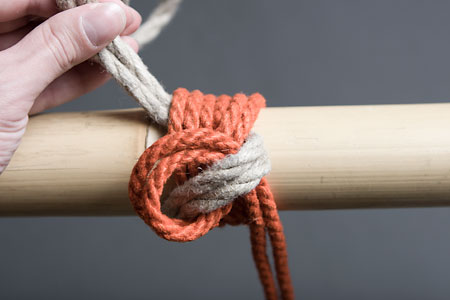
And back up through the loop, in the same direction as it went the first time (this is how you know it's not a real bowline):
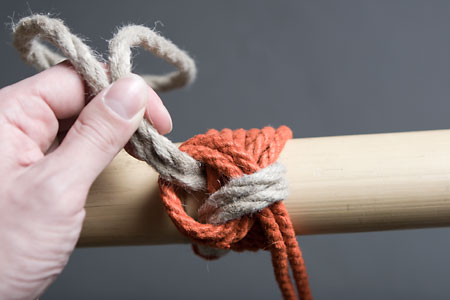
Now you just pull on the standing line to snug up the loop, and you're done:
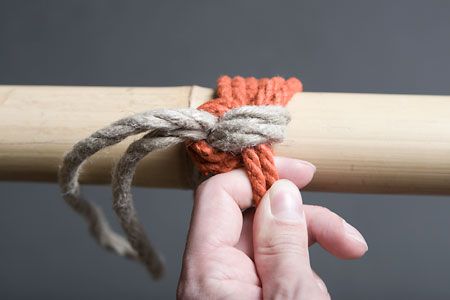
This should be secure (non-tightening) at this point, regardless of whether you pull on the bight, the standing line, or both. To undo it, it's generally easiest to loosen the standing line (orange) loop first; be forewarned that these can be hard to undo with tension on the standing line.
If you wind up with extra line on the bight end, as shown above, you can throw some hitches around the standing line just to use it up:
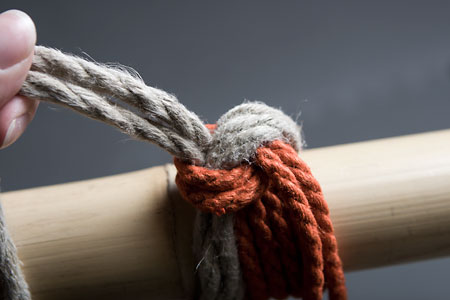

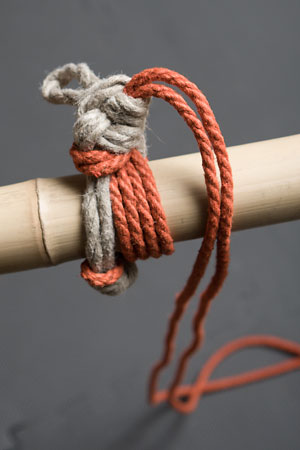
Or if you plan it right, you can end up with just a short little loop at the end, which is generally fine:
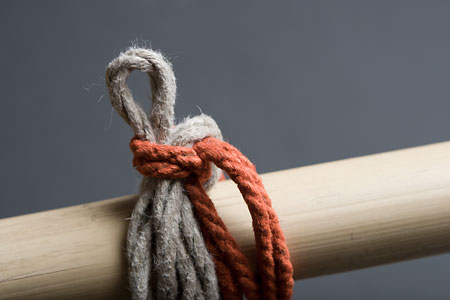
As a Double Column
The same principle can also be used to tie the Somerville Bowline as a double-column cuff. Start as before with some wraps, this time around both columns:
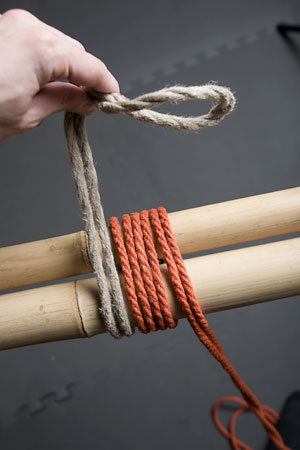
Now form your loop, however you like to do it, and pass the working end over the X of the loop:
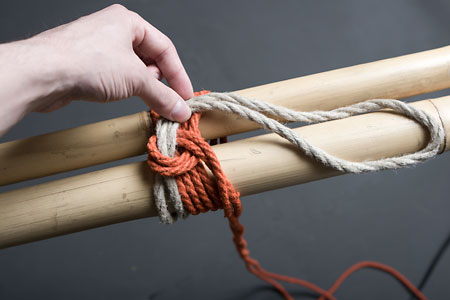
Next, pass down between the columns and over the outside of the back of the cuff, then up between the columns on the other side, coming back up through the loop; this cinches down the tie and controls the ultimate tightness of the cuff:
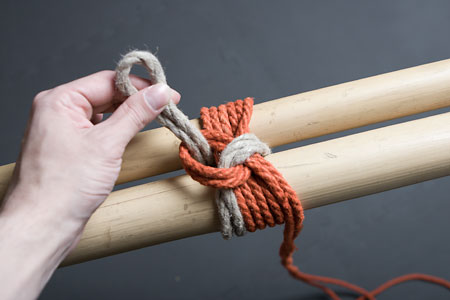
Now, don't tighten down the loop yet -- if you stopped here, pulling on the bight could cause the cuff to tighten by cinching it more. What you want to do now is to take another wrap with the bight, around just the top half of the cuff (don't pass between the columns this time) -- then up through the loop a third time:
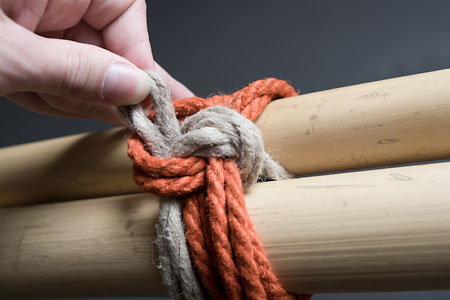
Now you can tighten down the loop in the standing line, and you're done:

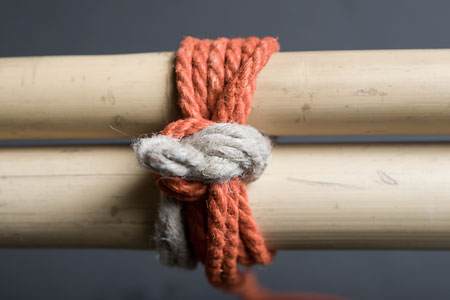

The back side (ignore the color-changing knot):
